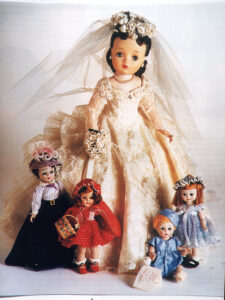 By Robert Reed
By Robert Reed Growing up the 1950s had to be a grand experience.
A new decade of expansion and prosperity had replaced the years of economic depression and world war.
Incomes were up as the nation entered the 1950s, and the sheer number of American families was on the increase. When Dwight Eisenhower was elected president in 1952 a delighted Pennsylvania told Time magazine, “It’s like America came home.”
And home was also where the most fabulous dolls were.
Some of the greatest of the American doll manufacturers were ready to make their best even better. Madam Alexander, American Character Doll Company, Effanbee, E.I. Horsman, Ideal, Vogue, and many others would turn the 50s into virtually a golden age of dolls for little girls.
Right from the beginning small, life-like baby dolls were-to pardon a pun—a very big item.
Effanbee’s original Dy-Dee Doll was on the market by 1950. “She drinks, wets, sleeps, blows bubbles with her bubble pipe and even cries when you put the special pacifier in her mouth and squeeze her,” said the advertisements.
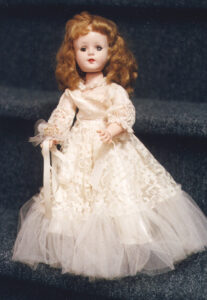 When ordered from the Montgomery Ward catalog, Dy-Dee came with her bubble pipe, spoon, nursing bottle, and even a supply of Q-tips for cleaning her soft rubber ear.
When ordered from the Montgomery Ward catalog, Dy-Dee came with her bubble pipe, spoon, nursing bottle, and even a supply of Q-tips for cleaning her soft rubber ear. Not to be outdone, E.I. Horsman soon offered their own newborn baby type in all-vinyl Tynie Baby. Horsman also produced a similar but slightly larger Sleepy which wore Hanes sleepwear.
At one point early in the 1950s, Ideal Toy Company may have taken the ‘real baby’ theme to the maximum with their legendary Betsy Wetsy dolls. The hard-plastic Betsy could drink, cry, wet, and—believe it or not—even had a runny nose. Boxed Betsy Wetsy outfits usually included a baby bottle, diaper, and diaper pins but the packages varied.
Madam Alexander greeted the new decade with a line of high quality plastic dolls. The two most popular models were Maggie and Margaret. Later the appealing Maggie face was used for the company’s spirited Alice in Wonderland and other issues. Possibly the most well received personality dolls of the early 1950s was Madam Alexander’s rendition of world champion ice skater Sonja Henie. Allied Grand Doll meanwhile produced a fine personality doll in the image of Dodger baseball star Jackie Robinson.
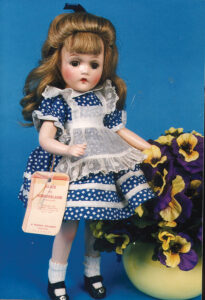 In 1951 all little girls in the country were invited to become Miss Curity based on “the famous doll muse you see in drug stores all over America.” The doll itself had been a major seller for the Ideal Toy Company and an instant promotion for Bauer and Black first-aid products. Parents were invited to “send a snapshot of your little girl to find a model for Miss Curity. “
In 1951 all little girls in the country were invited to become Miss Curity based on “the famous doll muse you see in drug stores all over America.” The doll itself had been a major seller for the Ideal Toy Company and an instant promotion for Bauer and Black first-aid products. Parents were invited to “send a snapshot of your little girl to find a model for Miss Curity. “ Ideal also had a big commercial hit early in the 1950s with their Miss Toni doll that put great emphasis on related hair care products.
At about the same time, the EJ. Horsman Company met the hair-care doll competition more or less ‘head on’ with their adorable all-plastic Bright Star little girl dolls. Since the doll came with innovative Saran hair, her hair could readily be combed, curled and waved.
In 1953 Niresk Industries of Chicago used massive magazine advertising to market Baby Blue Eyes. At 20 inches she was billed as “big as a baby with mystic skin and silk embroidered dress.”
Baby Blue Eyes was hard to resist because “she coos happily, like a real baby, when you hold her tight” She came with long braided hair which could be washed and waved because it too was Saran hair.
And soon Ideal was conducting a major advertising campaign for, what else, a wonderful doll with workable Saran hair. Ideal’s best effort turned out to be the immensely popular Saucy Walker.
“I walk, I flirt, I turn my head from side to side,” said Saucy, “I sit, I stand, I sleep, and I have Saran hair.”
By the middle 1950s Ideal had extended the concept of hair-care for dolls to include face-care for dolls.
Ideal launched the Harriet Hubbard Ayer doll in connection with a leading cosmetic company. With a lovely wig on her vinyl head, the doll came with curlers and cosmetics. Not only could her hair be styled, but also Ayer cosmetics could be applied to her dainty face. The Ayer doll was available in a wide variety of sizes from 14 to 21 inches, and each model included a beauty instruction booklet.
In 1957 one of the finest dolls produced in America was the Cissy bride doll from Madam Alexander. Cissy had long been a favorite and bride dolls were likewise enduring. Together they were tremendous.
The Cissy bride doll of that year had a hard plastic head and pierced ears. She wore a stunning white wedding gown with full headdress. Besides the bridal dress, various ball gowns were available at times for Cissy along with a complete Queen Elizabeth outfit.
And if Madam Alexander had Cissy, Vogue had the irresistible Ginny doll. In a word the reason for the overwhelming success of the Ginny doll in the 1950s was clothing. Ginny had, what one source described, a whole lifetime of costumes and even a Little Red Riding Hood outfit. Beyond that there was clothing and gear for ice skating, roller skating, and skiing down the slopes of where ever.
At the height of her popularity, Vogue produced an advertising brochure featuring the doll “Hi, I’m Ginny” it read. “What shall I wear today?” The answer, of course, was that Ginny could wear just about anything.
The American Character Doll Company’s answer to the whole mix, at least for a time, was Sweet Sue.
Sweet Sue was a remarkable doll that probably looked her best in a full and fluffy bridal outfit. Typically the doll was molded in hard plastic and wore mohair wigs. She had a wide variety of costumes, but her wardrobe was probably not as varied as that of the Ginny doll.
Interestingly, around 1957 the makers at American Character decided to alter the traditional Sweet Sue somewhat. “In order to compete with Ideal’s Miss Revlon and Alexander’s Cissy,” notes Dian Ziller author of the highly comprehensive volume, Dolls and Accessories, of the 1950s, “the doll was changed to a full figure fashion doll.” The change was not a particularly good one as Sweet Sue never equaled the popularity of the previous years.
Miss Revlon on the other hand continued to set new sales records. The brightly colored Miss Revlon boxes contained interesting and varied outfits. At one point in the latter 1950s the manufacturers even dared to include a Formfit bra and girdle for the ever progressive Miss Revlon.
When it came to infant type dolls, the American Character answer to Ideal’s memorable Betsy Wetsy was their own memorable Tiny Tears. Both became best-sellers for many years during the 1950s. Horsman’s earlier Tynie Baby and their Perma Nurser Bottle Baby were basically the same thing as Betsy and Tiny Tears, but never ever achieved the degree of fame as the other two. Madam Alexander had their own ‘infant’ offerings including Little Genius with a fantastic five-piece baby body.
Ideal finally wrapped up the golden decade in 1958 with a major re-issue of their famous Shirley Temple doll. The packaging was excellent including a suitcase-like TV Wardrobe box. Outfits varied but often included such accessories as a purse and matching shoes. What was somewhat different however were the packages which included eyeglasses for Shirley Temple.
 Cissy, Sweet Sue, Ginny, Toni, Shirley, Saucy, Harriett, Betsy, Baby Blue -Eyes…By the time the 1950s had concluded the roll call of wondrous dolls has swelled to a chorus of unforgettable names and equally engaging images. The decade remains today unsurpassed in the quality or variety of fabulous dolls.
Cissy, Sweet Sue, Ginny, Toni, Shirley, Saucy, Harriett, Betsy, Baby Blue -Eyes…By the time the 1950s had concluded the roll call of wondrous dolls has swelled to a chorus of unforgettable names and equally engaging images. The decade remains today unsurpassed in the quality or variety of fabulous dolls.
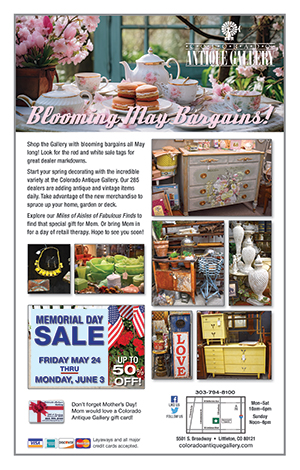

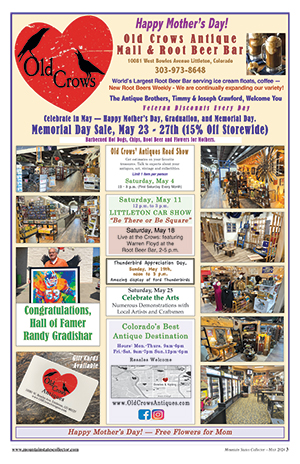
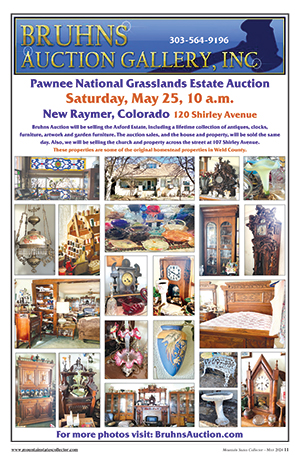












Follow Us